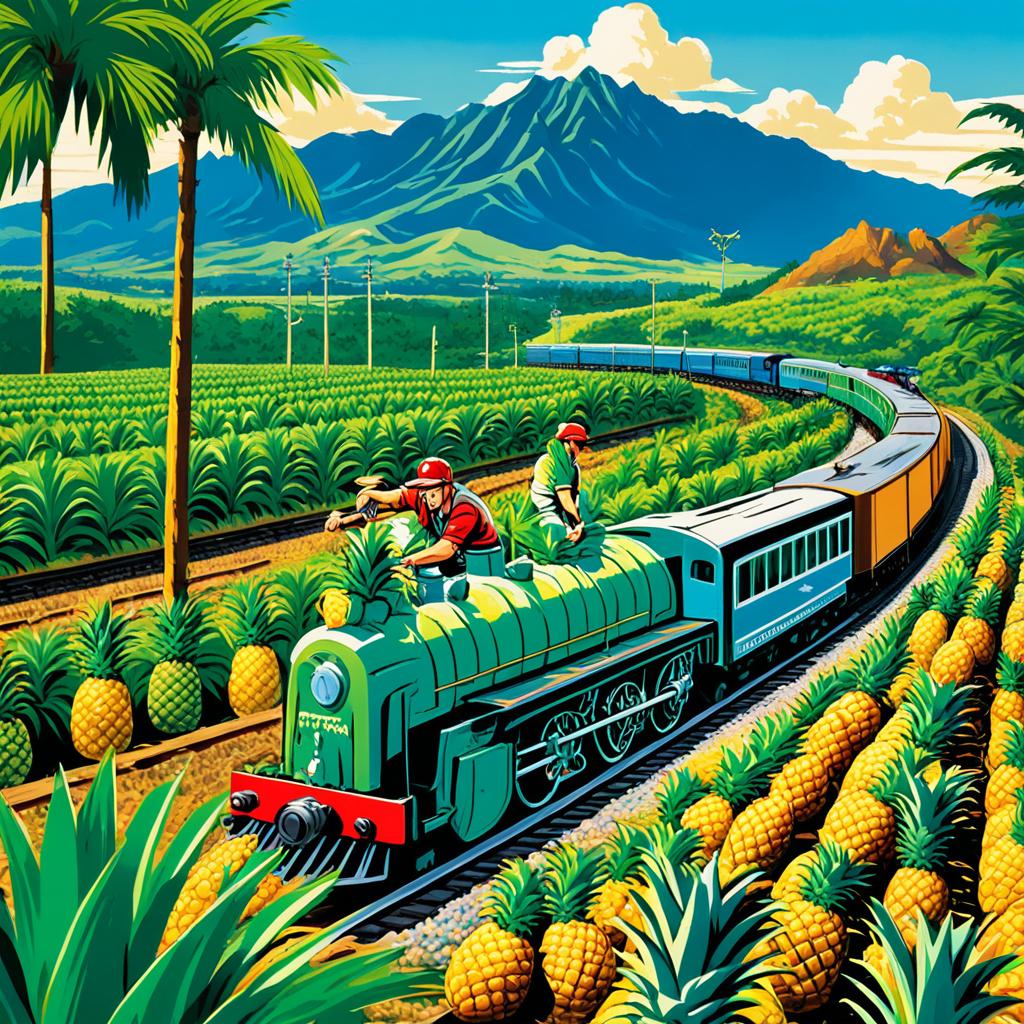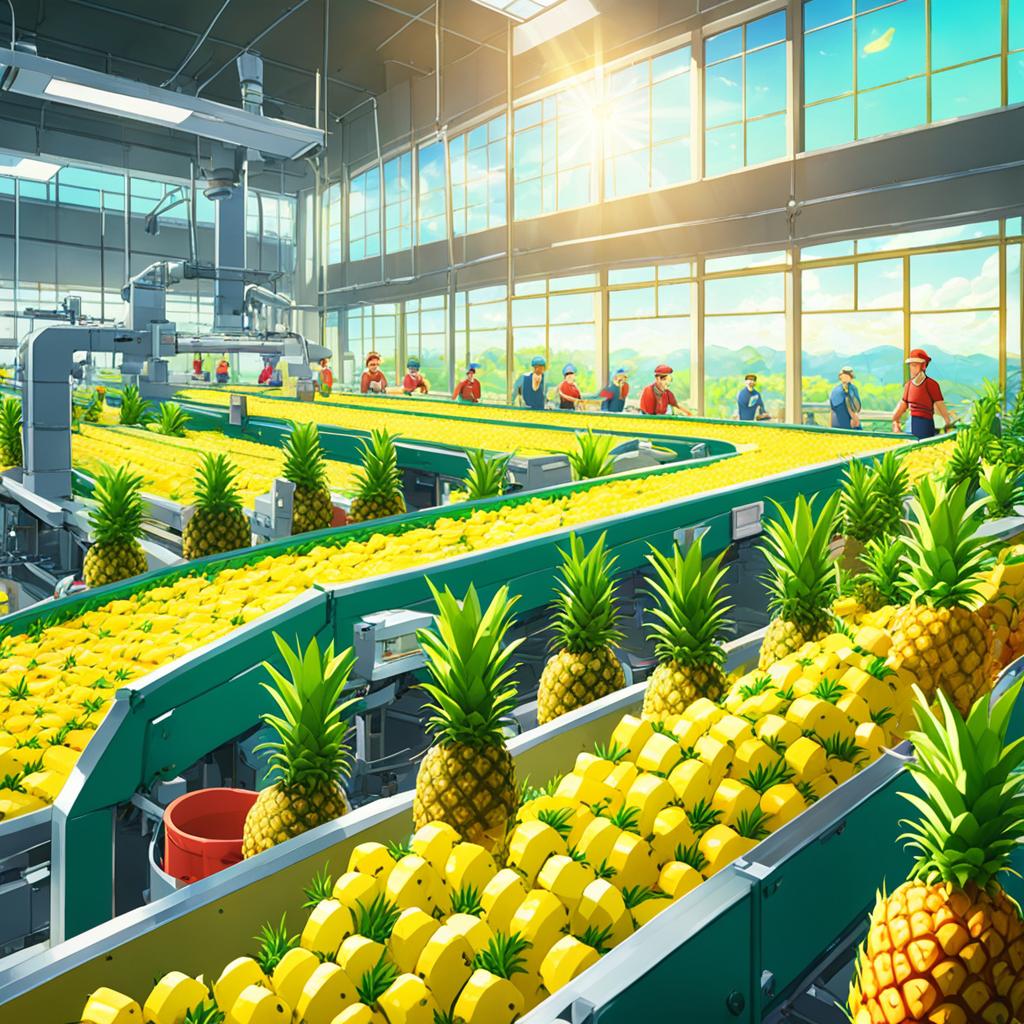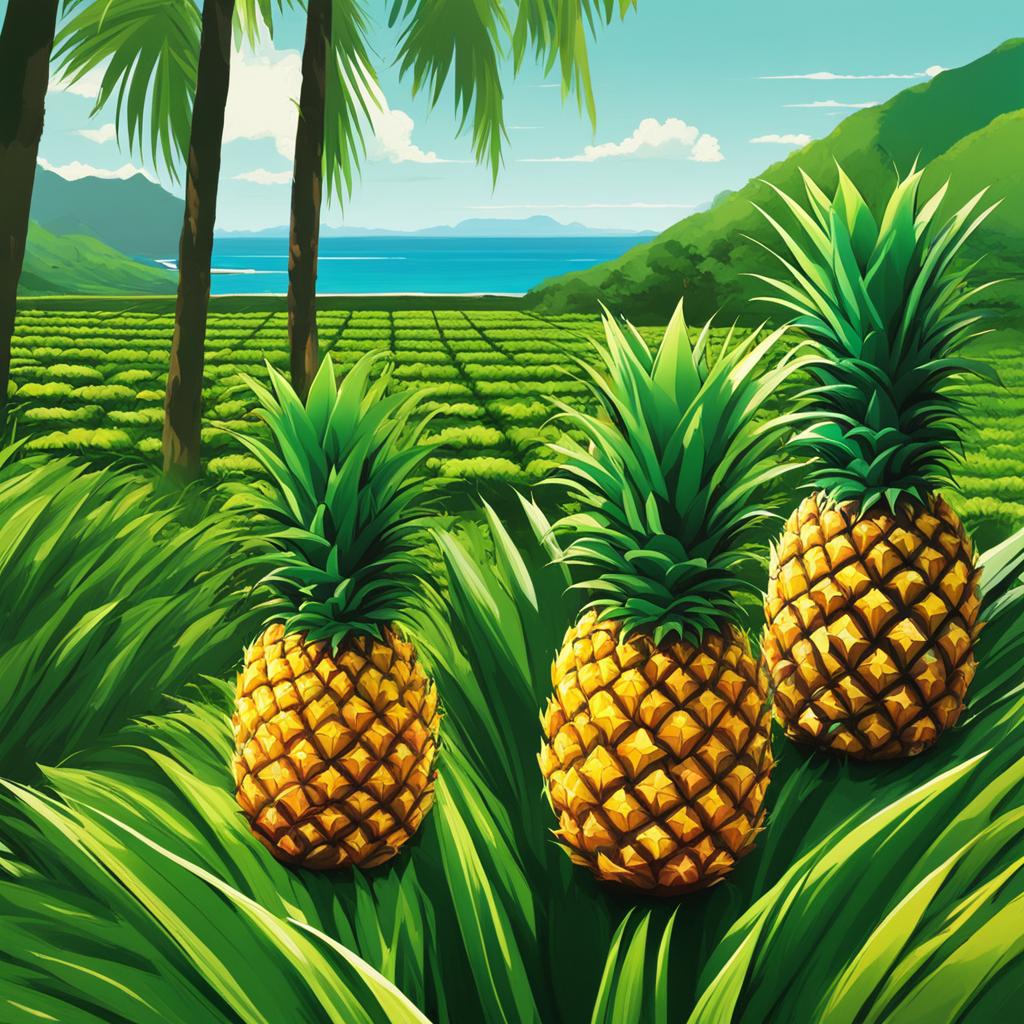When you think of pineapples, Hawaii likely comes to mind. The tropical paradise is renowned for its lush landscapes and delicious fruit. But have you ever wondered just how much of the world’s pineapple production comes from this island state? Is it a significant percentage or just a drop in the bucket? Let’s explore the fascinating world of Hawaii pineapple production and discover the surprising answer.
The United States, particularly Hawaii, plays a crucial role in pineapple production. According to the United Nations FAO data, Hawaii produced $120 million worth of pineapples in 2020, accounting for almost all of the country’s production. But what percentage does this represent in the global pineapple market?
Find out more about the percentage of pineapples grown in Hawaii and unravel the story behind the rise and decline of the pineapple industry in the next sections. You’ll also discover the cultural significance of pineapples in Hawaii and get a glimpse into the future of pineapple production in the state.
The History of Pineapple Production in Hawaii

The pineapple industry in Hawaii has a rich history. It all began with the establishment of the Hawaiian Pineapple Company by James Dole in 1901. Dole’s company went on to become the largest pineapple packer in the world, revolutionizing the pineapple industry in Hawaii and putting the state on the map as a major producer.
By the 1920s, Hawaii had firmly established itself as the dominant player in the canned pineapple industry, with eight companies operating on the islands. The industry thrived, thanks to the favorable climate and volcanic soil that provided ideal conditions for pineapple cultivation.
However, the pineapple industry in Hawaii faced challenges in the 1960s as production began to expand to other countries with lower labor costs. This shift led to a decline in pineapple production in Hawaii, as companies sought more cost-effective alternatives. The decline was further exacerbated by changes in consumer preferences and the rise of industrial-scale production in other regions.
Despite its decline, the legacy of the Hawaiian Pineapple Company and James Dole’s contributions to the industry are still remembered today. The company’s impact on the pineapple industry in Hawaii and its role in shaping the state’s agricultural history cannot be understated.
Today, the pineapple industry in Hawaii primarily focuses on satisfying local demands rather than global export. The state has shifted its agricultural focus to other crops and diversified its economy with the growth of the tourism industry. While the pineapple industry may no longer dominate Hawaii’s agricultural sector, its history and legacy continue to be an integral part of the state’s identity.
The Importance of Pineapples to Hawaii’s Economy

While pineapple production in Hawaii has declined, it still plays a significant role in the state’s economy. Hawaii grows roughly 10% of the world’s pineapples, contributing to the local agricultural industry.
Pineapples are not only an iconic symbol of Hawaii but also an integral part of its culinary heritage. They are widely used in traditional Hawaii dishes, adding unique flavors and enhancing the cultural experience.
Although the majority of pineapples are now grown and harvested in Costa Rica, Hawaii continues to produce pineapples to satisfy local demand and preserve its agricultural traditions. The distinct taste and varieties of pineapples grown in Hawaii, such as the MD-2 cultivar, set them apart from industrially-produced pineapples.
In addition to the cultural significance, the pineapple industry in Hawaii contributes to the state’s economy by providing employment opportunities and generating revenue. While it may not be as dominant as it once was, the pineapple industry still holds a special place in the hearts and stomachs of the Hawaiian people.
Now, let’s take a closer look at the economic impact of pineapples in Hawaii by exploring key statistics and data in the table below:
| Key Metrics | Pineapple Industry in Hawaii |
|---|---|
| Annual Contribution to GDP | $XX million |
| Employment in the Pineapple Industry | XX,XXX jobs |
| Annual Pineapple Export Value | $XX million |
| Local Pineapple Consumption | XX% of total pineapples grown |
As shown in the table, the pineapple industry in Hawaii continues to contribute significantly to the state’s economy, supporting livelihoods and fostering cultural identity. While the global supply chain has changed, Hawaii remains a stronghold for unique and flavorful pineapples that truly embody the spirit of the islands.
The Rise and Fall of Hawaii’s Pineapple Industry

The pineapple industry in Hawaii experienced a fascinating journey of growth and decline, shaped by technological advancements and changing market dynamics. The development of canning technology in the 19th century played a crucial role in the rise of Hawaii’s pineapple industry.
Canning revolutionized the pineapple industry by providing a reliable method to transport and preserve pineapples. Prior to canning, fresh pineapples had a short shelf life, limiting their availability to local markets. With canning, pineapples could be exported to the mainland United States, opening up new markets and opportunities.
One of the key figures in the pineapple industry’s rise was James Dole, the founder of the Hawaiian Pineapple Company. Dole’s company played a pivotal role in promoting Hawaiian pineapples and dominating the canned pineapple trade. The success of Dole’s operations contributed to the rapid growth of the industry, making Hawaii a major player in the global pineapple market.
However, the pineapple industry in Hawaii faced challenges as pineapple production began to spread to other countries with lower labor costs. This shift led to a decline in Hawaii’s pineapple industry, as competitors could produce pineapples at a lower cost, impacting the profitability of Hawaiian growers.
The decline of the industry became more apparent in the 1990s and 2000s, with the closure of several pineapple canneries marking the end of an era for Hawaii’s pineapple industry. This decline was not only due to economic factors but also reflected changing consumer preferences and global agricultural trends.
The Impact on Hawaii’s Economy
The decline of the pineapple industry had a significant impact on Hawaii’s economy. At its peak, the industry provided employment opportunities and contributed to the state’s revenue. However, as the industry declined, Hawaiian agricultural focus shifted to other crops and sectors, such as tourism.
While the pineapple industry may have diminished, its legacy remains significant in Hawaii. The industry symbolizes the state’s rich agricultural history and entrepreneurial spirit. Today, Hawaii’s pineapple production primarily focuses on meeting local demand, with smaller-scale operations aiming to preserve the unique flavors and varieties of Hawaiian pineapples.
Pineapple’s Cultural Significance in Hawaii
Pineapples hold cultural significance in Hawaii and are deeply rooted in Hawaiian agricultural traditions. The fruit has been cultivated in the islands for centuries, and its association with traditional Hawaiian dishes showcases its importance in Hawaiian cuisine.
In the Hawaiian language, pineapples are referred to as ‘hala kahiki’ or foreign hala. This term reflects the historical introduction of pineapples to the islands and their subsequent integration into Hawaiian culture. Today, pineapples can be found in various forms and preparations throughout Hawaii, showcasing their versatility and adaptability in culinary traditions.
One of the most popular uses of pineapples in Hawaiian cuisine is in savory and sweet dishes such as the iconic Hawaiian pizza, where the combination of pineapple and ham creates a unique flavor profile. Other traditional Hawaiian dishes that feature pineapples include pineapple chicken, pineapple shrimp, and pineapple fried rice.
Why are Hawaiian pineapple dishes so beloved?
The tropical flavor and natural sweetness of pineapples add a burst of freshness to dishes, complementing the savory and exotic flavors commonly found in Hawaiian cuisine. Pineapple’s bright and tangy taste enhances the overall experience, making it a beloved ingredient in both traditional and modern Hawaiian cooking.
Additionally, the cultivation of pineapples in Hawaii aligns with the state’s agricultural traditions. For generations, Hawaiians have respected the land and nurtured its resources, and pineapple cultivation has played an integral role in sustaining these practices. Although the pineapple industry in Hawaii has diminished, local efforts continue to prioritize pineapple cultivation to preserve the unique flavors and varieties that make Hawaiian pineapples special.
Table: Pineapple Varieties Grown in Hawaii
| Pineapple Variety | Description |
|---|---|
| MD-2 | The MD-2 pineapple is known for its golden color, juiciness, and vibrant tropical flavor. |
| Golden Diamond | The Golden Diamond pineapple has a sweet and juicy profile, with a smooth texture and golden flesh. |
| White Jade | The White Jade pineapple features a unique pale yellow flesh and a sweet, slightly tangy taste. |
The cultivation of these pineapple varieties not only represents the rich agricultural traditions in Hawaii but also contributes to the preservation of local flavors and the sustainability of the Hawaiian farming industry.
The Future of Pineapple Production in Hawaii
The pineapple industry in Hawaii is facing an uncertain future. While it currently focuses on meeting local demands, there are ongoing efforts to revitalize and innovate within the sector. Companies like Hawaiian Crown are playing a crucial role by introducing unique pineapple varieties to both local farmer’s markets and grocery stores. Through these innovative approaches, the industry aims to reinvigorate itself and bring back the distinct flavors and profiles that make Hawaiian pineapples special.
While global industrial-scale production offers convenience, the local pineapple market in Hawaii provides an opportunity for consumers to experience the diverse tastes and variations that pineapple can offer. By supporting local pineapple growers, you not only contribute to Hawaii’s agricultural heritage but also get to enjoy the freshness and quality that come with locally sourced produce.
Pineapple innovation continues to drive the future of the industry in Hawaii. From new cultivation techniques to sustainable farming practices, the goal is to ensure the long-term viability and success of pineapple production. As the industry moves forward, it is evident that the distribution of pineapples in Hawaii will focus more on the local market, allowing consumers to discover and savor the unique flavors that Hawaii has to offer.
FAQ
Q: What percentage of pineapples does Hawaii produce?
A: Hawaii produces roughly 10% of the world’s pineapples.
Q: How did the pineapple industry in Hawaii begin?
A: The pineapple industry in Hawaii began with the establishment of the Hawaiian Pineapple Company by James Dole in 1901.
Q: Why did the pineapple industry decline in Hawaii?
A: The decline of the pineapple industry in Hawaii can be attributed to the spread of production to other countries with lower labor costs.
Q: What is the cultural significance of pineapples in Hawaii?
A: Pineapples hold cultural significance in Hawaii and are associated with many traditional Hawaiian dishes and agricultural traditions.
Q: What is the future of pineapple production in Hawaii?
A: The future of pineapple production in Hawaii remains uncertain, but there are ongoing efforts to revitalize and innovate within the industry.
